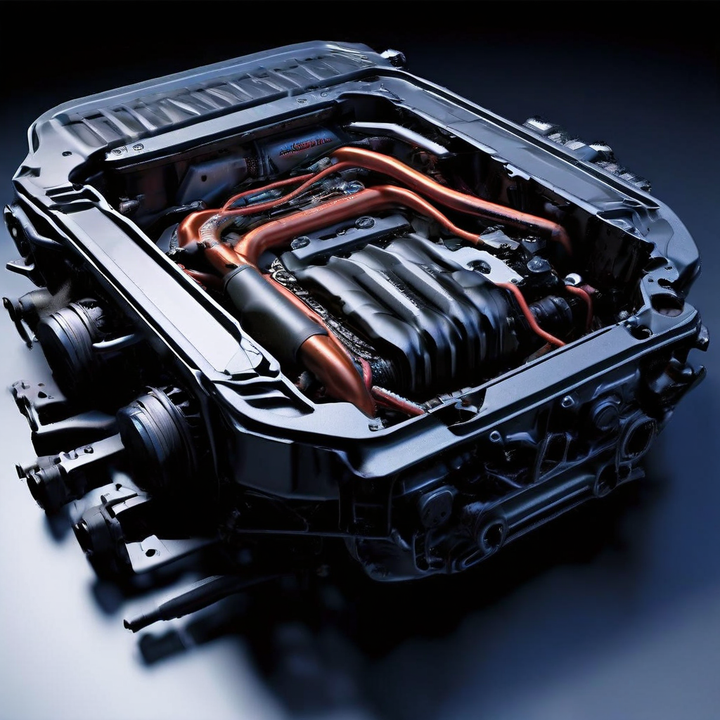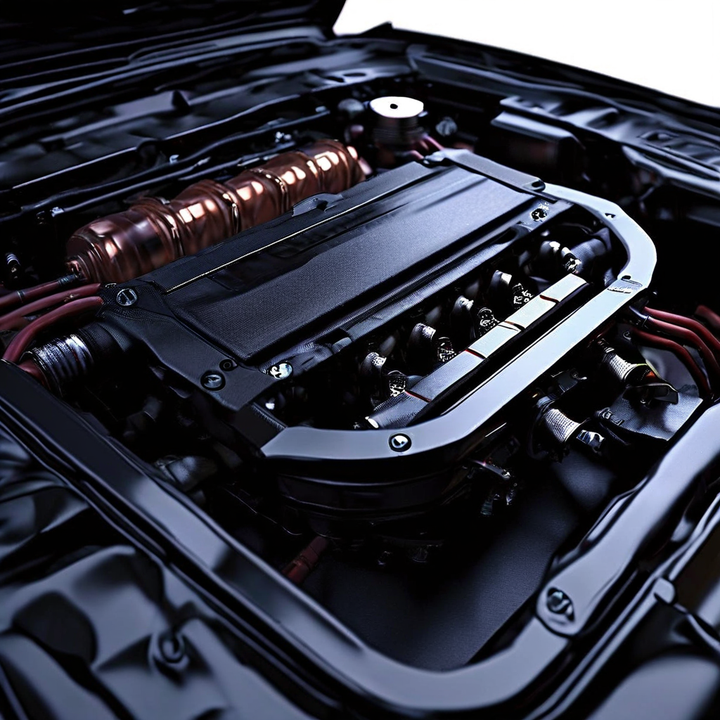


The P0318 code is a diagnostic trouble code (DTC) that indicates an issue with the Rough Road Sensor A Signal Circuit. This sensor helps the vehicle's powertrain control module (PCM) distinguish between engine issues and rough road conditions by monitoring the crankshaft's position and movement.
Faulty rough road sensor
Misplaced or disconnected road sensor
Faulty crankshaft position sensor
Failed electronic brake control module (EBCM)
Defective powertrain control module (PCM)
Wiring or electrical defects related to sensors
Control unit requiring initialization of a new road sensor
A vehicle experiencing random activation of traction control and ABS lights, as reported by users on forums.
Instances where the check engine light turns on after hitting a pothole, indicating a possible sensor or wiring issue.
| Cause | Description |
|---|---|
| Faulty rough road sensor | Sensor is damaged or malfunctioning |
| Misplaced or disconnected road sensor | Sensor is not properly positioned or connected |
| Faulty crankshaft position sensor | Sensor is worn out or damaged |
| Failed EBCM | Electronic Brake Control Module is not functioning correctly |
| Defective PCM | Powertrain Control Module is damaged or corroded |
| Wiring or electrical defects | Issues with the wiring or electrical connections |
| Control unit requiring initialization | New sensor needs to be initialized |
Inspect and Replace Rough Road Sensor: Check the sensor for physical damage and replace it if necessary.
Check Wiring and Connections: Use a multimeter to test for continuity and resistance in the wiring. Repair or replace any damaged wiring.
Crankshaft Position Sensor: Inspect and test the crankshaft position sensor. Replace it if it shows signs of wear or damage.
Electronic Brake Control Module (EBCM): Test the EBCM for proper functionality using a diagnostic tool. Replace if faulty.
Powertrain Control Module (PCM): Inspect the PCM for physical damage or corrosion. Replace if necessary.
Regularly inspect sensors and wiring for signs of wear or damage.
Keep the vehicle's software updated to ensure proper sensor calibration.
Perform routine diagnostic checks to catch issues early.
| Repair Technique | Description |
|---|---|
| Inspect and Replace Rough Road Sensor | Check for damage and replace if needed |
| Check Wiring and Connections | Test wiring with a multimeter and repair as necessary |
| Crankshaft Position Sensor | Inspect and replace if worn or damaged |
| Electronic Brake Control Module (EBCM) | Test functionality and replace if faulty |
| Powertrain Control Module (PCM) | Inspect for damage or corrosion and replace if needed |
Visual Inspection: Start with a visual inspection of all sensors, wiring, and connectors.
Use a Multimeter: Test the continuity and resistance of the wiring.
Advanced Scan Tool: Use an advanced scan tool to monitor sensor readings while driving over rough roads.
Replace Faulty Components: Replace any faulty sensors, wiring, or control modules as identified during the diagnostic process.
Regular vehicle maintenance and inspections.
Keeping the vehicle's software and firmware updated.
Avoiding rough driving conditions when possible.
Schedule regular check-ups with a professional mechanic.
Use high-quality replacement parts to ensure longevity.
Educate yourself on the vehicle's warning signs and address them promptly.
| Preventive Measure | Best Practice |
|---|---|
| Regular maintenance | Schedule check-ups with a mechanic |
| Software updates | Keep vehicle software and firmware updated |
| Avoid rough conditions | Drive carefully to avoid rough roads |
Diagnosing the exact cause of the P0318 code can be complex and time-consuming.
Access to advanced diagnostic tools may be limited for some vehicle owners.
Misdiagnosis can lead to unnecessary replacements and increased costs.
The specific make and model of the vehicle can affect the diagnostic and repair process.
Environmental factors, such as driving conditions, can influence sensor performance.
The importance of following manufacturer guidelines for repairs and maintenance.
Some may argue that DIY repairs can save money, but the complexity of diagnosing P0318 often requires professional expertise.
Others might suggest ignoring the code if the vehicle seems to run fine, but this can lead to more severe issues over time.
| Challenge | Consideration |
|---|---|
| Complex diagnosis | Time-consuming and requires expertise |
| Limited access to tools | Advanced diagnostic tools may not be available |
| Misdiagnosis | Can lead to unnecessary costs |

Understanding and addressing the P0318 code is essential for maintaining vehicle performance and safety. By knowing the common causes, repair techniques, preventive measures, and challenges, vehicle owners can effectively manage this issue.
Regular maintenance and prompt attention to warning signs can prevent the P0318 code from causing significant problems.
Don't let a small sensor issue turn into a major headache. Stay proactive with your vehicle's maintenance and consult a professional mechanic at the first sign of trouble. Your car—and your peace of mind—will thank you.
The P0318 code is a diagnostic trouble code (DTC) indicating an issue with the Rough Road Sensor A Signal Circuit. This sensor helps the vehicle's powertrain control module (PCM) distinguish between engine issues and rough road conditions by monitoring the crankshaft's position and movement.
Common symptoms include the Check Engine Light or Malfunction Indicator Light turning on, issues with the vehicle's traction control, malfunctioning Anti-Lock Brake System (ABS), engine misfires, and rough running.
Possible causes include a faulty rough road sensor, misplaced or disconnected road sensor, faulty crankshaft position sensor, failed electronic brake control module (EBCM), defective powertrain control module (PCM), and wiring or electrical defects related to sensors.
Start with a visual inspection of all sensors, wiring, and connectors. Use a multimeter to test the continuity and resistance of the wiring, and an advanced scan tool to monitor sensor readings while driving over rough roads.
Repair options include inspecting and replacing the rough road sensor, checking and repairing wiring and connections, inspecting and replacing the crankshaft position sensor, testing and replacing the EBCM, and inspecting and replacing the PCM if necessary.
While it may be possible to drive with the P0318 code, it is not recommended as it can affect the vehicle's traction control and ABS, potentially leading to unsafe driving conditions.
The cost to fix the P0318 code can vary depending on the specific issue and the vehicle make and model. Professional diagnostics and repairs can range from $150 to $500 or more.
Yes, the P0318 code is serious as it can affect the vehicle's traction control and ABS, leading to potential safety issues. It should be addressed promptly.
While some basic diagnostics and repairs can be done by experienced DIYers, it is often recommended to seek professional help due to the complexity of diagnosing and fixing the P0318 code.
Regular vehicle maintenance and inspections, keeping the vehicle's software and firmware updated, and avoiding rough driving conditions when possible can help prevent the P0318 code from occurring.

Miguel started tinkering with car radios as a teenager, fascinated by the intricate dance of wires and circuits. This passion led him to pursue a career as an automotive electrician. For the past 10 years, Miguel has tackled everything from flickering headlights to mysterious electrical gremlins. He thrives on troubleshooting electrical problems and enjoys sharing his knowledge to empower car owners to understand their vehicles better.



